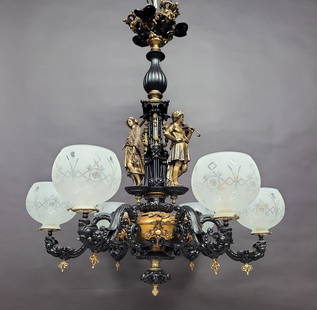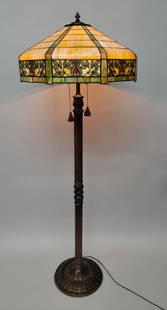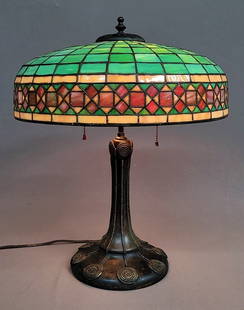
1925 Dr. ROBERT GODDARD on Rocketry Science
Similar Sale History
View More Items in Home & DécorRelated Home & Décor
More Items in Home & Décor
View More





Item Details
Description
Autographs
Dr. Robert Goddard Months before Launching the World's First Liquid-Propelled Rocket on the Science of Rocketry
ROBERT GODDARD (1882 -1945), American engineer, professor, physicist, and inventor who is credited with creating and building the world's first liquid-fueled rocket, which he successfully launched on March 16, 1926.
October 30, 1925-Dated Autograph Letter Signed “Robt. Goddard”, 1 page, measuring 8.5” x 11”, on “Clark University, Worcester, Massachusetts, Department of Physics” Letterhead Stationery, Choice Very Fine. This great content letter is written to Clark University graduate scholar Russell B. Hastings. The previous June, Hastings had completed a thesis on a physics problem supplied by Goddard, entitled, “The Emission of Electricity from Substances on Incandescent Carbon.” Unbeknownst to Hastings, Robert Goddard was using the thesis to further his inquiries into rocketry and space travel. Years later, Hastings would recall, “Unlike most research physicists, who were usually poor teachers, Goddard was the best I ever had. But I never suspected that he was planning to use my work to prove ion repulsion for rockets.” Here, Goddard writes, in full:
“Dear Mr. Hastings: --- I was glad to hear from you, and to know how things are going. Regarding the courses which you had last year, there are as follows, with the proper designation and total credit.
Electricity and Magnetism, No. 23; 6 hours
Research - __________; No. 37; 24 hours
Advanced Theory of Electricity and magnetism, No. 35; 6 hours
Seminar - __________; No. 310; 2 hours
Applied Math. ______; No. ____; 6 hours
The applied math. course, which constituted the minor, has not been given a number in the catalogue, but I believe it should be a '2' course as it is a purely graduate course, and would never be given to an undergraduate. I hope this will put the matter straight. If it does not, please let me know. I am glad to know that the thesis is progressing. From what you say about it, it looks like a very interesting piece of work. Remember me to Dr. [John C.] Hubbard [professor of Physics at the Clark undergraduate college], and tell him, please, that I was sorry not to be within reach of the phone when he called up. We both send our best regards to you. Sincerely, -- (signed) Robt. Goddard"
While seemingly preoccupied with teaching and academic guidance, Goddard was actually absorbed in his research. In December, he had his first important success with a liquid-propelled rocket. In a static rack attached to the physics building, his new rocket engine lifted itself for 27 seconds. Three months later came the true test: independent flight.
A very rare Handwritten Letter from Goddard with excellent associations, dating from the very birth of rocketry.
On a cold New England morning on March 16, 1926, Goddard and his machinist, Henry Sachs, drove out to Aunt Effie's farm to set up the rocket and launching frame (a pipe). Goddard's wife and a colleague, Percy Roope, arrived shortly after noon - just in time for the flight. Goddard recorded the event in his diary the very next day: "The First flight with a rocket using liquid propellants was made yesterday at Aunt Effie's farm in Auburn. The day was clear and comparatively quiet… Even though the release was pulled, the rocket did not rise at first, but the flame came out, and there was a steady roar. After a number of seconds it rose, slowly until it cleared the frame, and then at express train speed, curving over to the left, and striking the ice and snow, still going at a rapid rate. It looked almost magical as it rose, without any appreciably greater noise or flame, as if it said: 'I've been here long enough; I think I'll be going somewhere else, if you don't mind'.
Esther [his wife] said that it looked like a fairy or an esthetic dancer as it started off. The sky was clear, for the most part, with large shadowy white clouds, but by late in the afternoon there was a large pink cloud in the West, over which the sun shone. One of the surprising things was the absence of smoke, the lack of a very loud roar, and the smallness of the flame.” The rocket had risen 41 feet and flown a distance of 184 feet in just 2.5 seconds before impacting the ground, "proving conclusively the practicality of the liquid-propelled rocket" Goddard would later write.
Dr. Robert Goddard Months before Launching the World's First Liquid-Propelled Rocket on the Science of Rocketry
ROBERT GODDARD (1882 -1945), American engineer, professor, physicist, and inventor who is credited with creating and building the world's first liquid-fueled rocket, which he successfully launched on March 16, 1926.
October 30, 1925-Dated Autograph Letter Signed “Robt. Goddard”, 1 page, measuring 8.5” x 11”, on “Clark University, Worcester, Massachusetts, Department of Physics” Letterhead Stationery, Choice Very Fine. This great content letter is written to Clark University graduate scholar Russell B. Hastings. The previous June, Hastings had completed a thesis on a physics problem supplied by Goddard, entitled, “The Emission of Electricity from Substances on Incandescent Carbon.” Unbeknownst to Hastings, Robert Goddard was using the thesis to further his inquiries into rocketry and space travel. Years later, Hastings would recall, “Unlike most research physicists, who were usually poor teachers, Goddard was the best I ever had. But I never suspected that he was planning to use my work to prove ion repulsion for rockets.” Here, Goddard writes, in full:
“Dear Mr. Hastings: --- I was glad to hear from you, and to know how things are going. Regarding the courses which you had last year, there are as follows, with the proper designation and total credit.
Electricity and Magnetism, No. 23; 6 hours
Research - __________; No. 37; 24 hours
Advanced Theory of Electricity and magnetism, No. 35; 6 hours
Seminar - __________; No. 310; 2 hours
Applied Math. ______; No. ____; 6 hours
The applied math. course, which constituted the minor, has not been given a number in the catalogue, but I believe it should be a '2' course as it is a purely graduate course, and would never be given to an undergraduate. I hope this will put the matter straight. If it does not, please let me know. I am glad to know that the thesis is progressing. From what you say about it, it looks like a very interesting piece of work. Remember me to Dr. [John C.] Hubbard [professor of Physics at the Clark undergraduate college], and tell him, please, that I was sorry not to be within reach of the phone when he called up. We both send our best regards to you. Sincerely, -- (signed) Robt. Goddard"
While seemingly preoccupied with teaching and academic guidance, Goddard was actually absorbed in his research. In December, he had his first important success with a liquid-propelled rocket. In a static rack attached to the physics building, his new rocket engine lifted itself for 27 seconds. Three months later came the true test: independent flight.
A very rare Handwritten Letter from Goddard with excellent associations, dating from the very birth of rocketry.
On a cold New England morning on March 16, 1926, Goddard and his machinist, Henry Sachs, drove out to Aunt Effie's farm to set up the rocket and launching frame (a pipe). Goddard's wife and a colleague, Percy Roope, arrived shortly after noon - just in time for the flight. Goddard recorded the event in his diary the very next day: "The First flight with a rocket using liquid propellants was made yesterday at Aunt Effie's farm in Auburn. The day was clear and comparatively quiet… Even though the release was pulled, the rocket did not rise at first, but the flame came out, and there was a steady roar. After a number of seconds it rose, slowly until it cleared the frame, and then at express train speed, curving over to the left, and striking the ice and snow, still going at a rapid rate. It looked almost magical as it rose, without any appreciably greater noise or flame, as if it said: 'I've been here long enough; I think I'll be going somewhere else, if you don't mind'.
Esther [his wife] said that it looked like a fairy or an esthetic dancer as it started off. The sky was clear, for the most part, with large shadowy white clouds, but by late in the afternoon there was a large pink cloud in the West, over which the sun shone. One of the surprising things was the absence of smoke, the lack of a very loud roar, and the smallness of the flame.” The rocket had risen 41 feet and flown a distance of 184 feet in just 2.5 seconds before impacting the ground, "proving conclusively the practicality of the liquid-propelled rocket" Goddard would later write.
Buyer's Premium
- 23%
1925 Dr. ROBERT GODDARD on Rocketry Science
Estimate $5,500 - $6,500
1 bidder is watching this item.
Shipping & Pickup Options
Item located in Rancho Santa Fe, CA, usSee Policy for Shipping
Payment

Related Searches
TOP


































































